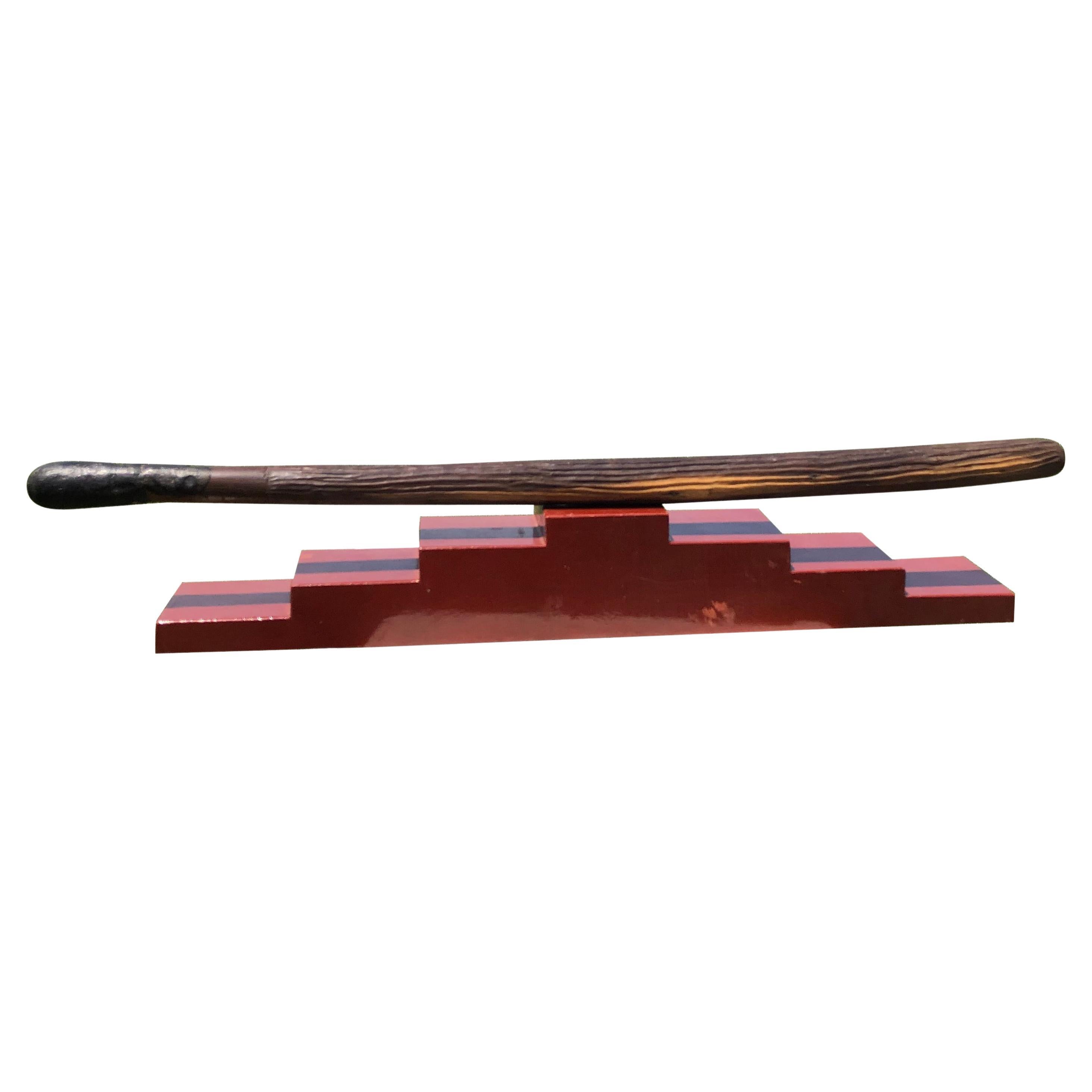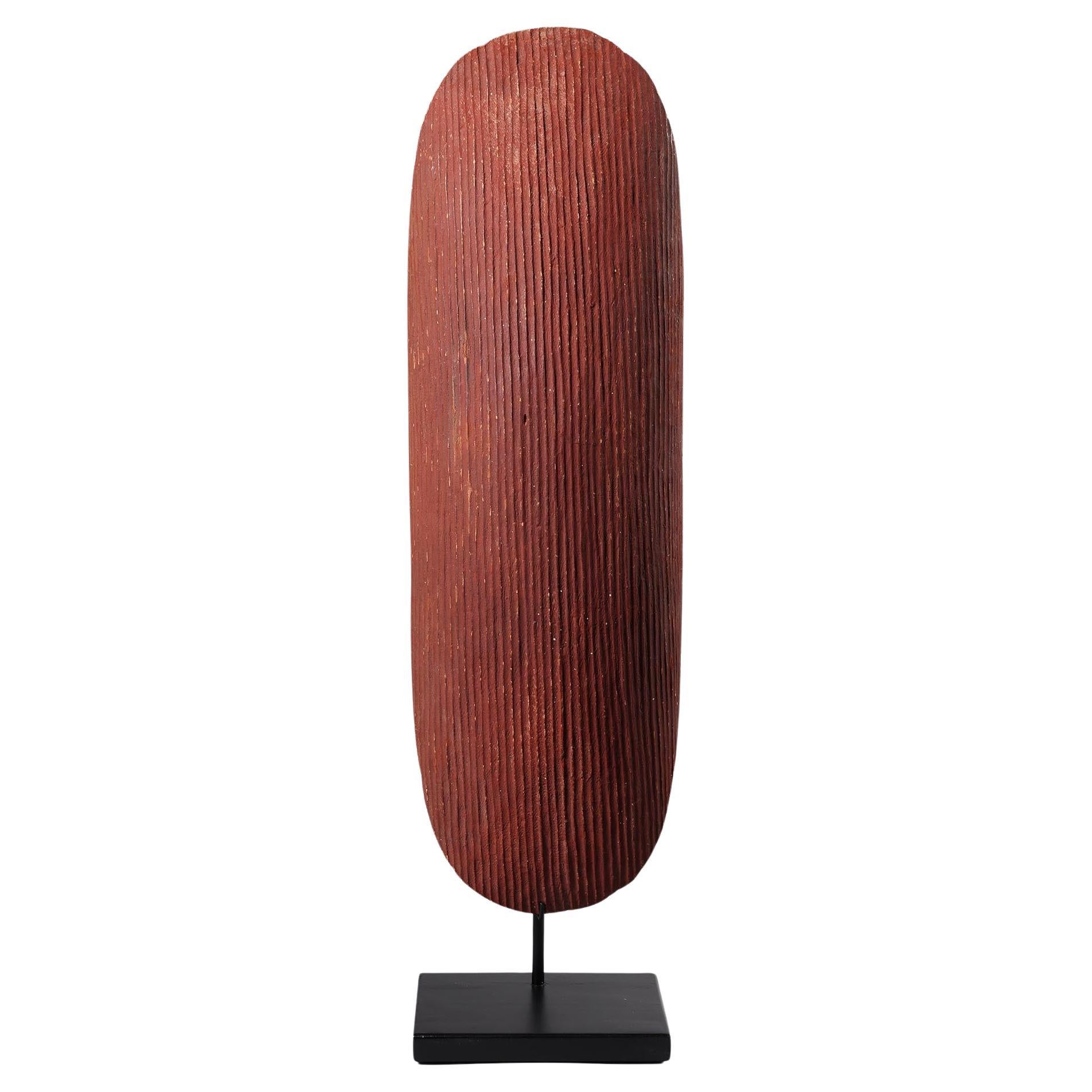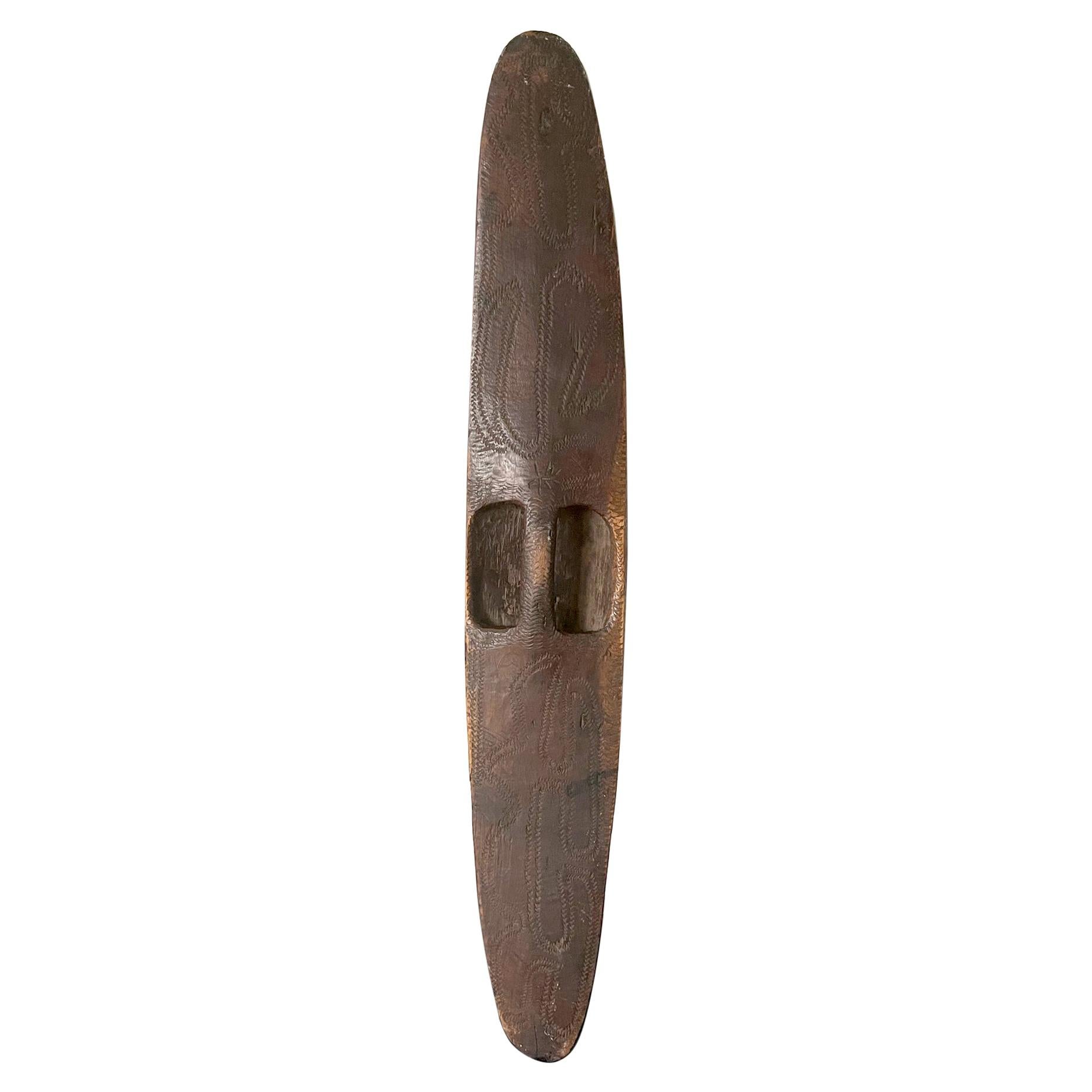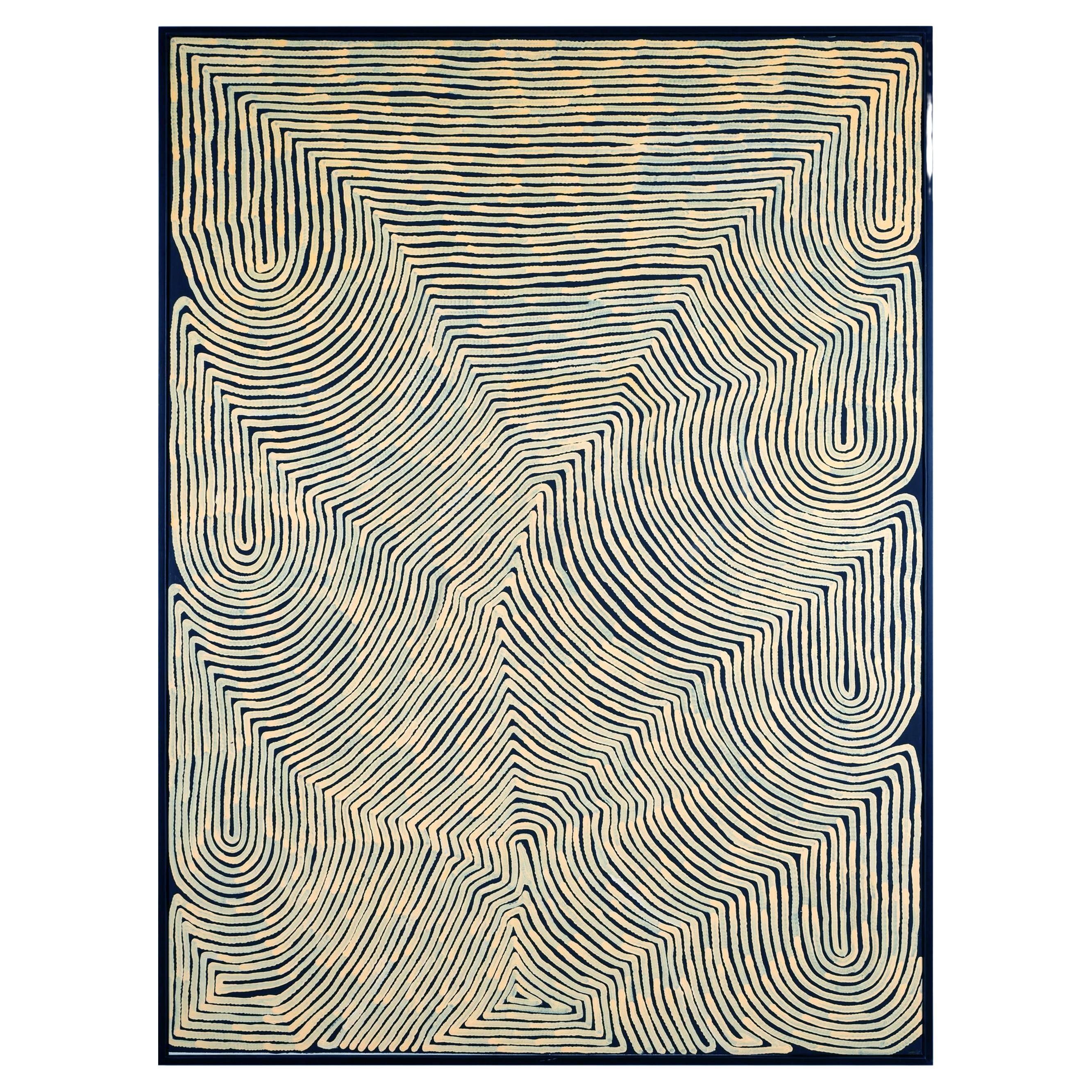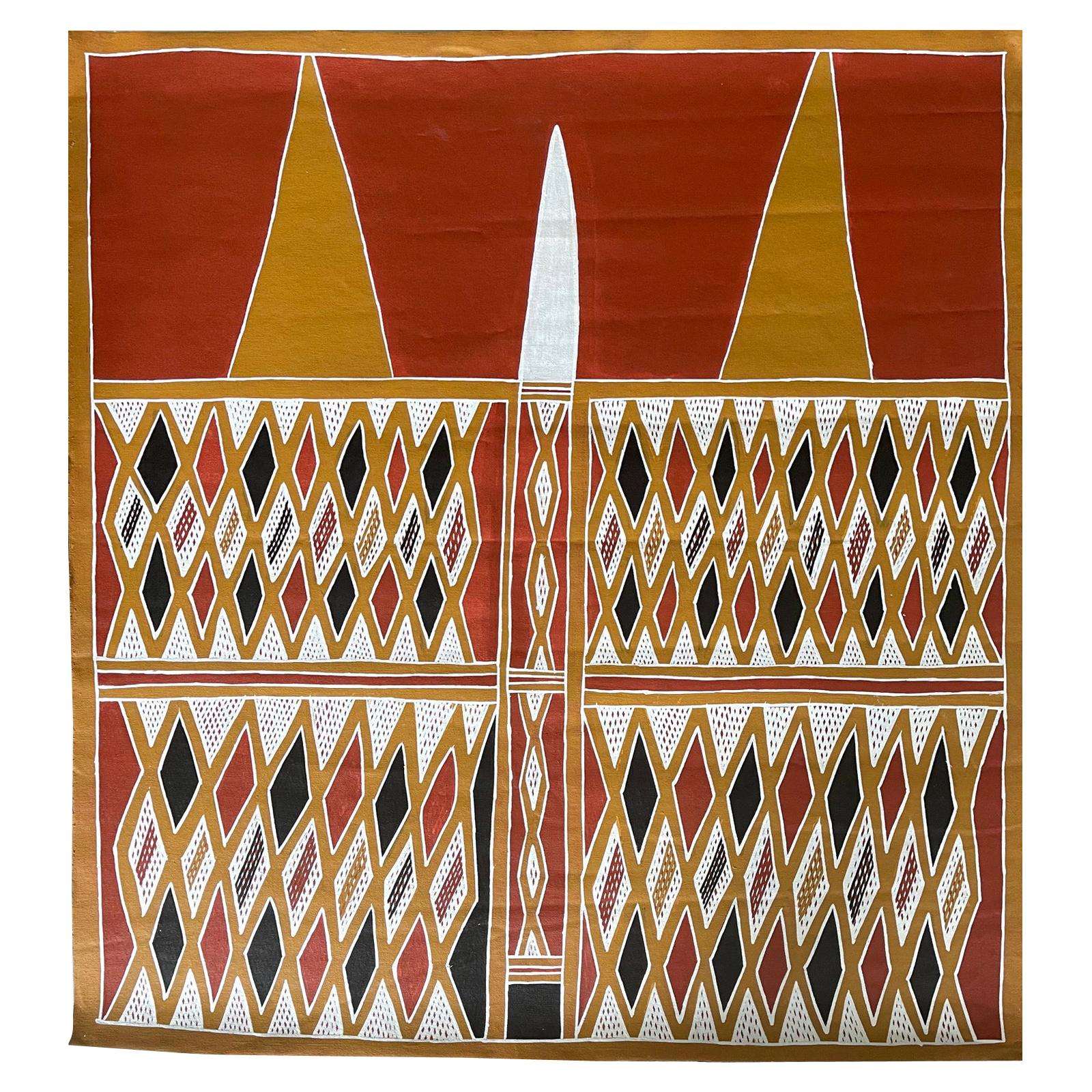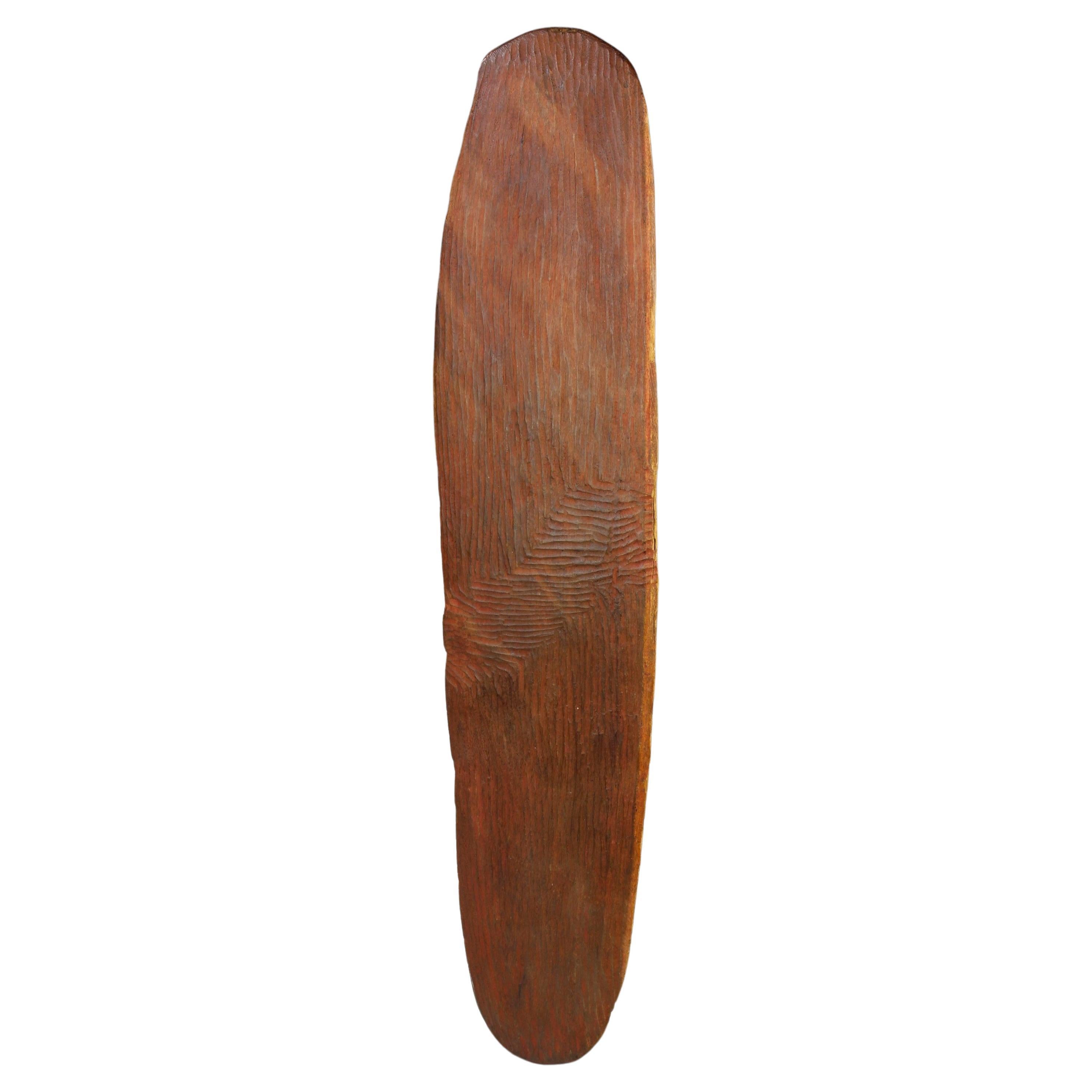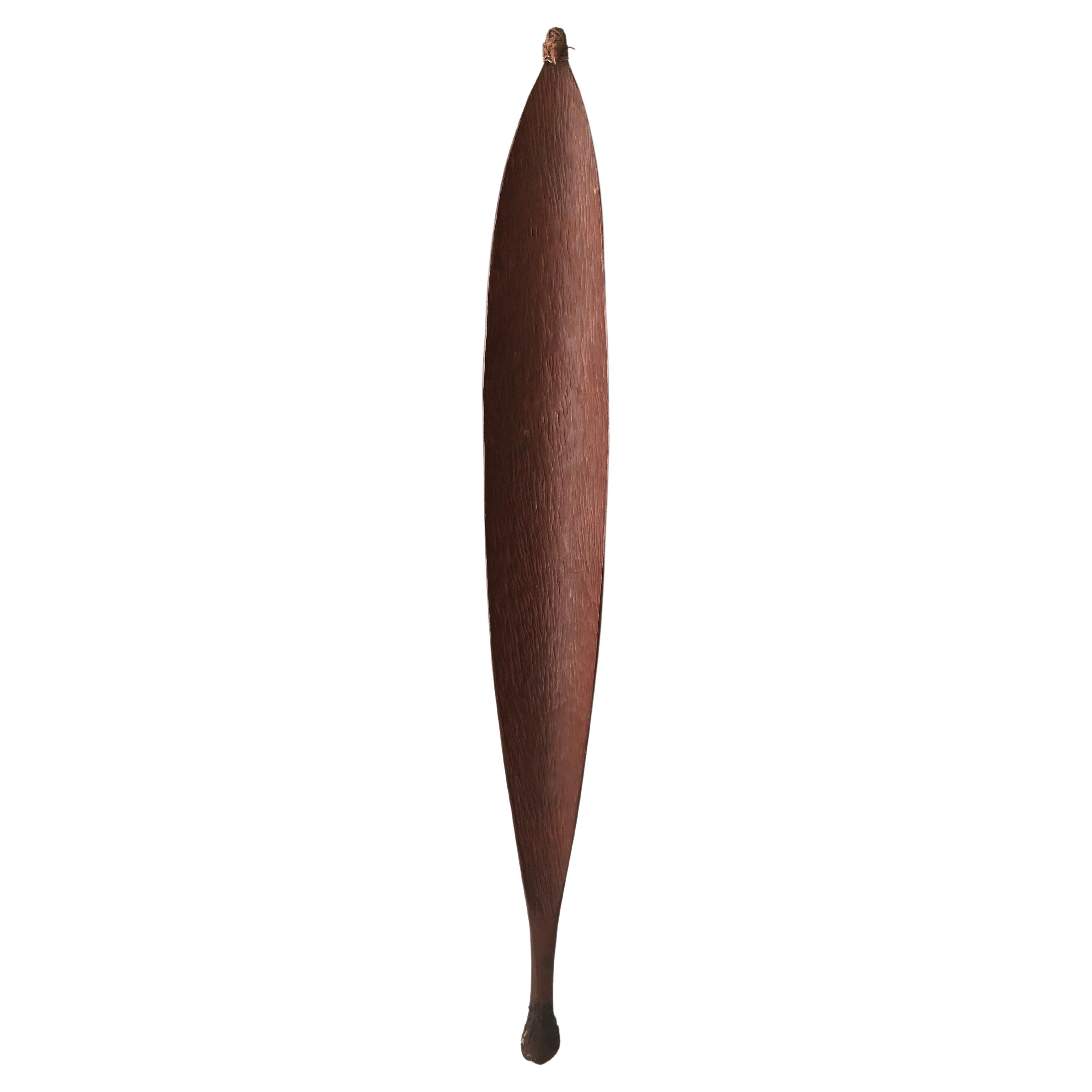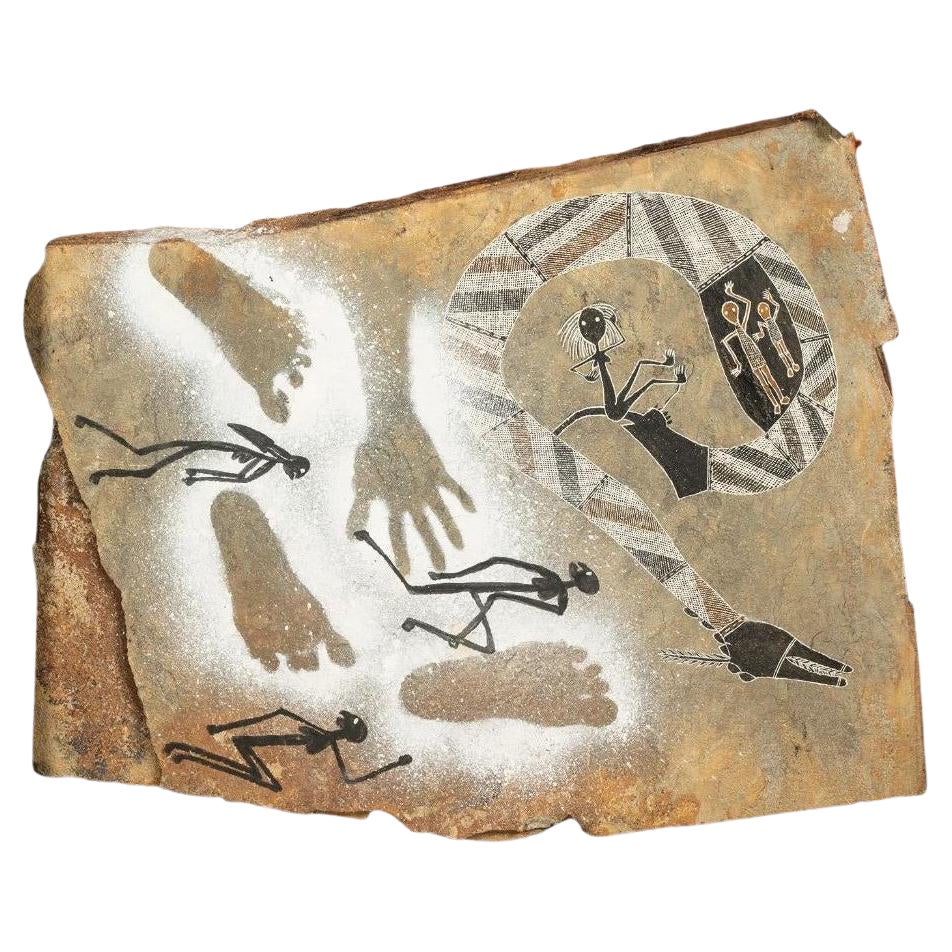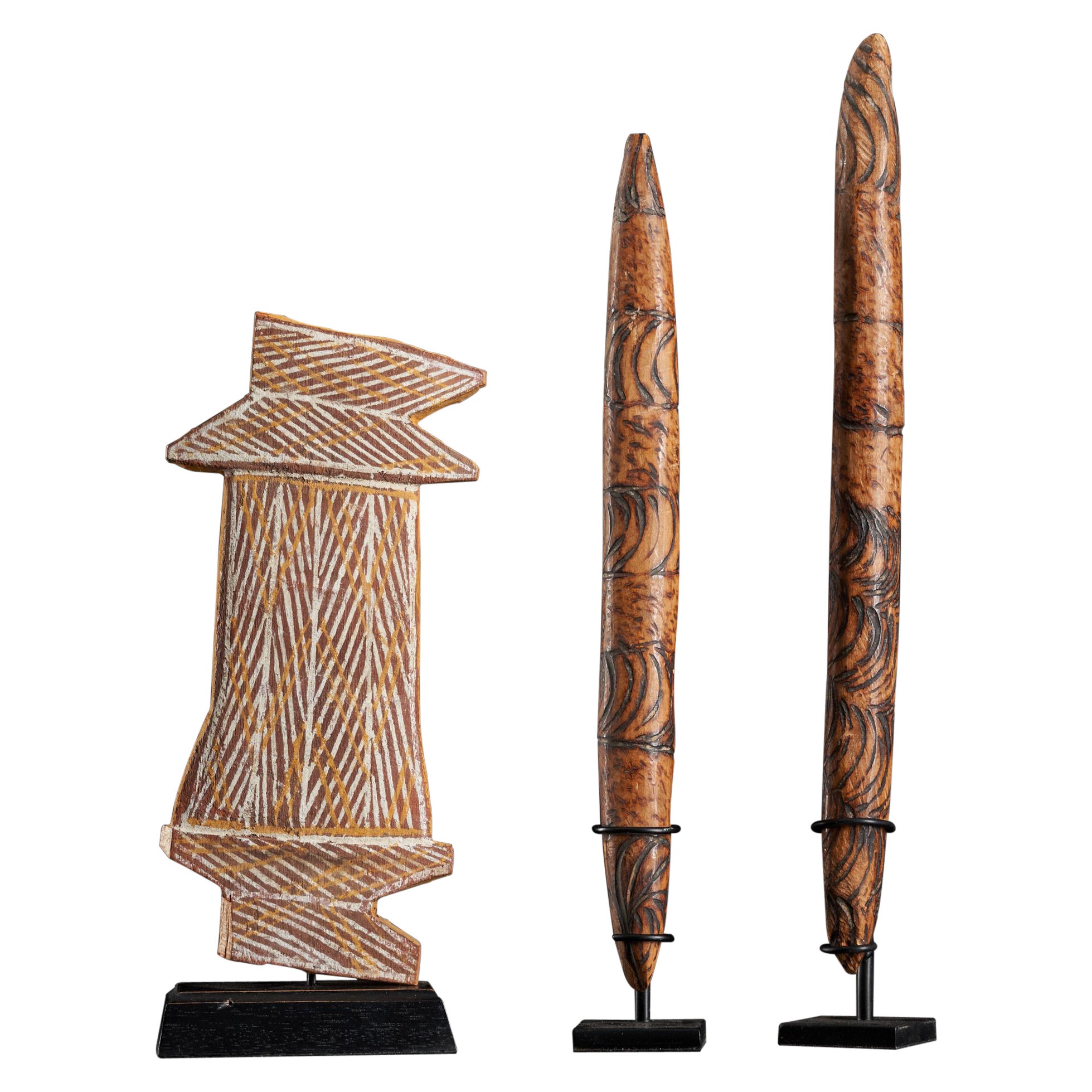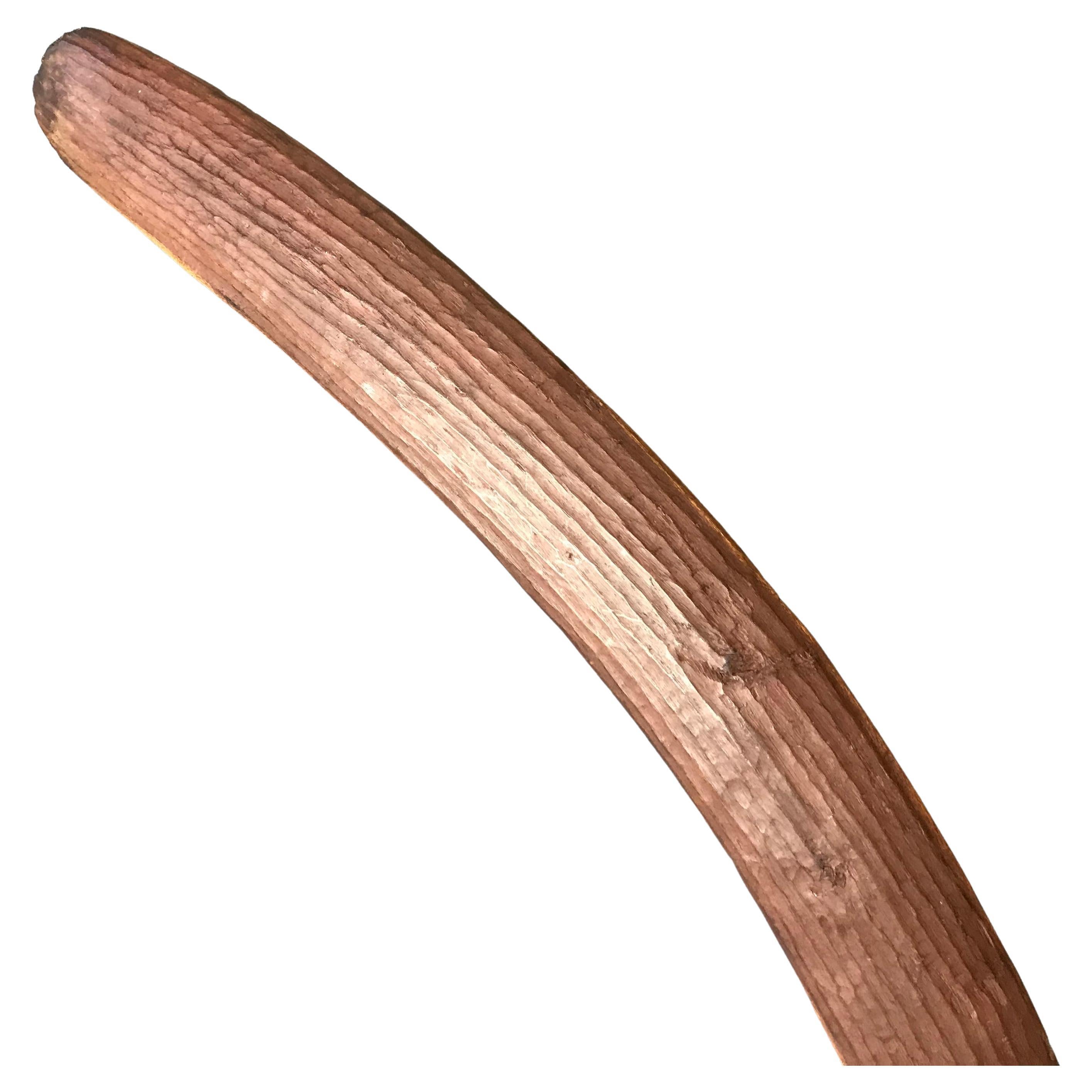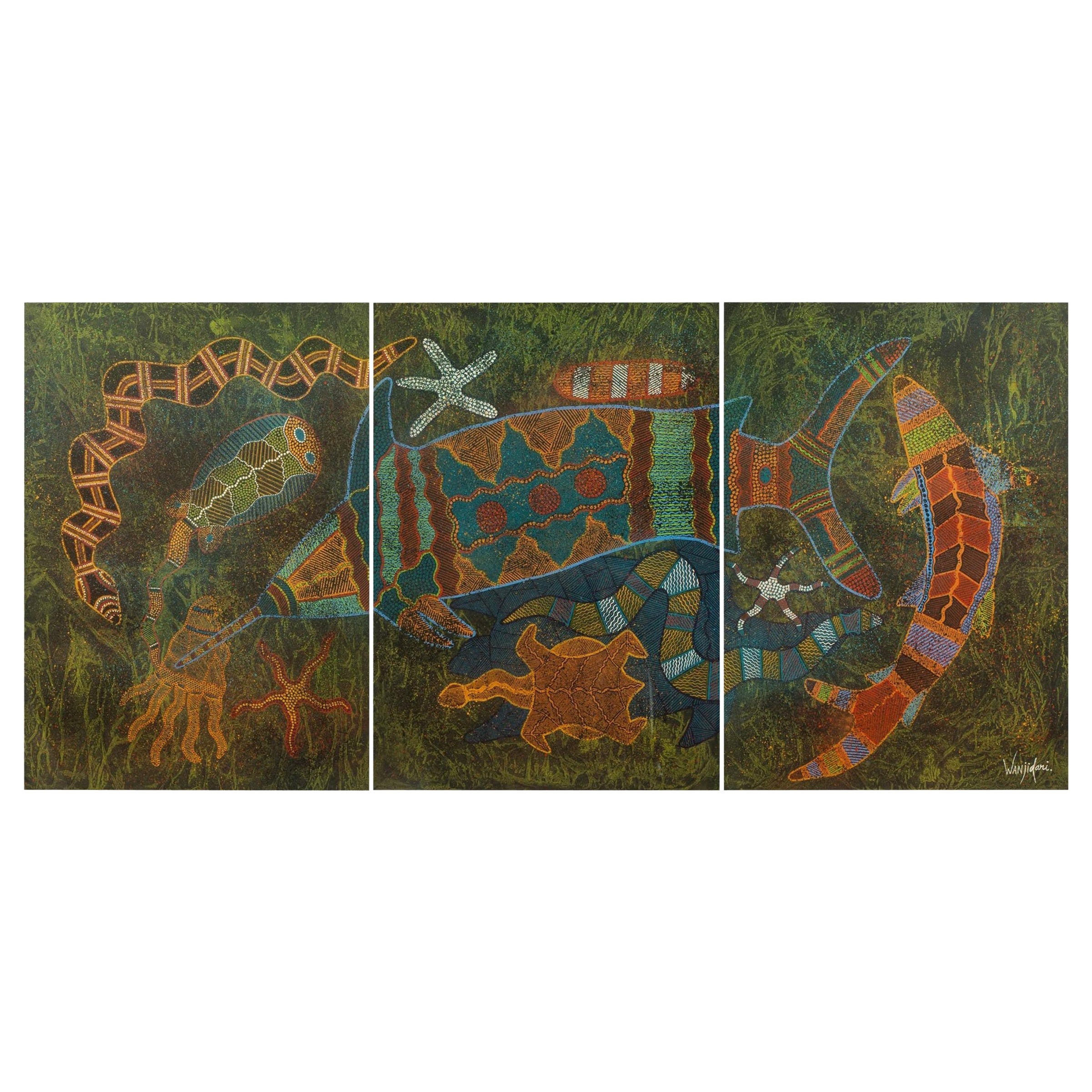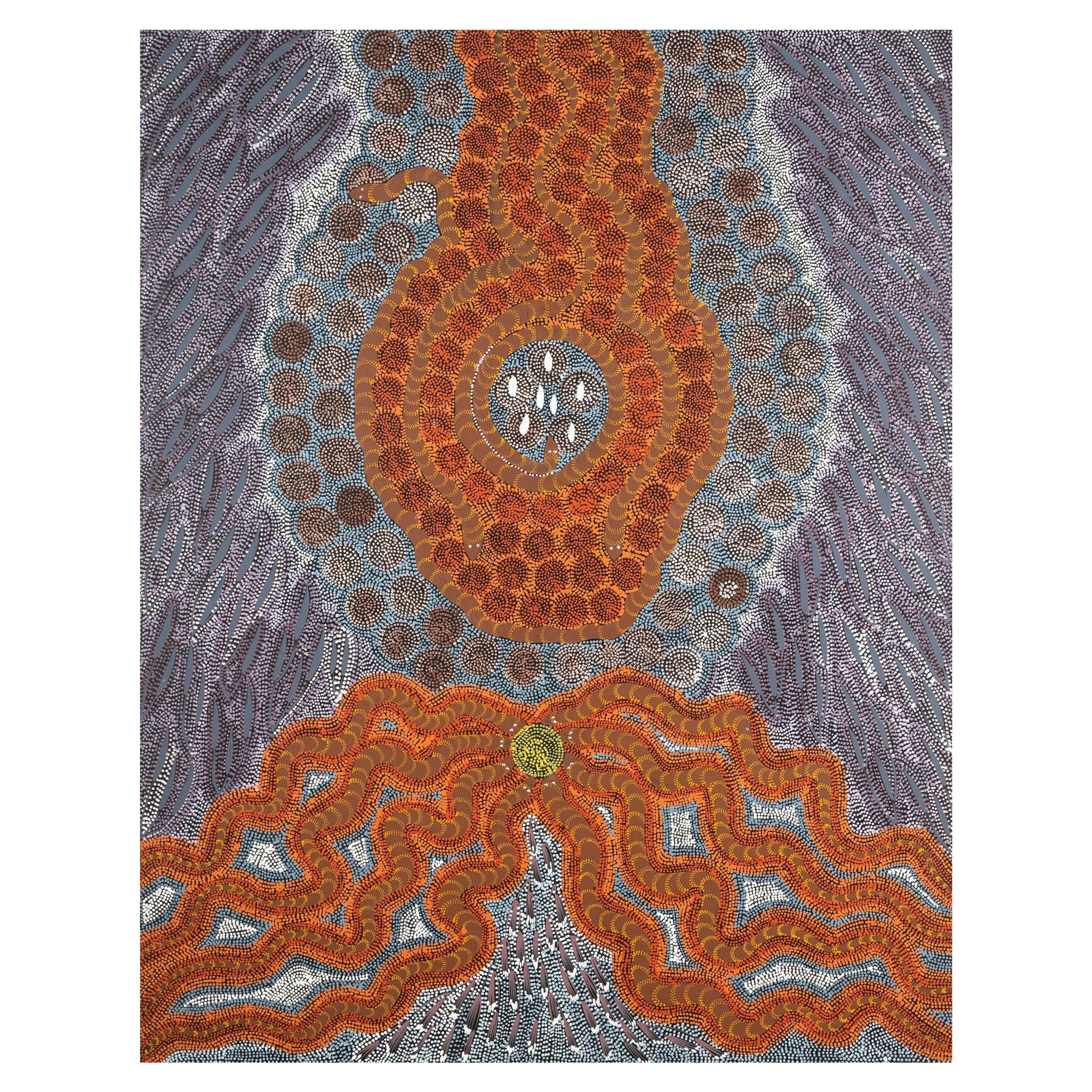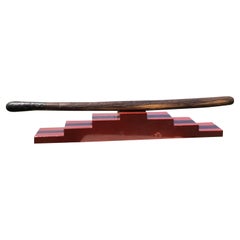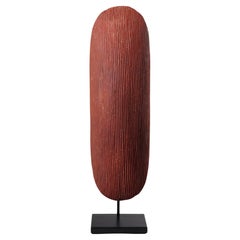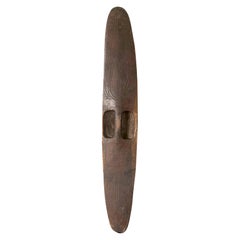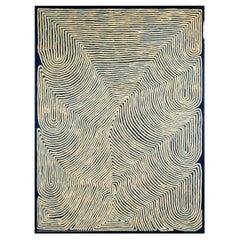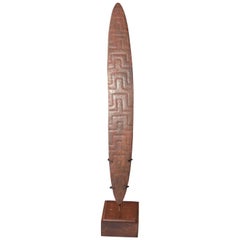
Fine Old Australian Aboriginal Churinga or Sacred Message Board
View Similar Items
1 of 4
Fine Old Australian Aboriginal Churinga or Sacred Message Board
About the Item
- Dimensions:Height: 13.78 in (35 cm)Width: 1.97 in (5 cm)Depth: 0.4 in (1 cm)
- Materials and Techniques:
- Place of Origin:
- Period:
- Date of Manufacture:19th Century
- Condition:Wear consistent with age and use.
- Seller Location:London, GB
- Reference Number:1stDibs: LU3650312430611
Authenticity Guarantee
In the unlikely event there’s an issue with an item’s authenticity, contact us within 1 year for a full refund. DetailsMoney-Back Guarantee
If your item is not as described, is damaged in transit, or does not arrive, contact us within 7 days for a full refund. Details24-Hour Cancellation
You have a 24-hour grace period in which to reconsider your purchase, with no questions asked.Vetted Professional Sellers
Our world-class sellers must adhere to strict standards for service and quality, maintaining the integrity of our listings.Price-Match Guarantee
If you find that a seller listed the same item for a lower price elsewhere, we’ll match it.Trusted Global Delivery
Our best-in-class carrier network provides specialized shipping options worldwide, including custom delivery.You May Also Like
Old Australian Aboriginal Peoples Throwing Club
Located in South Burlington, VT
A monumental Australian aboriginal throwing club, crafted from a very hard wood and it dates to the early 20th century.
Incised longitudinal fluted design with a pitch coated handle.
Condition: Very good condition. Display base not included.
Dimensions: 26.5 inches in length.
Lifetime guarantee of authenticity: All of our works of art come with our lifetime authenticity guarantee. Red base not included.
History:
The throwing stick...
Category
Early 20th Century Australian Tribal Art
Materials
Wood
$310 Sale Price
58% Off
Aboriginal Desert Shield Red Pigment Fine Incised Lines Australia on Stand
Located in Point Richmond, CA
Early to mid-20th century Aboriginal Desert Shield of lightweight wood with finely incised carved vertical lines on front and back, encrusted red pigment, simple curved oval shape, b...
Category
Mid-20th Century Australian Tribal Tribal Art
Materials
Organic Material
Carved Wood Aboriginal Shield, Western Australia
Located in Atlanta, GA
A tall and narrow parrying shield from the Aboriginal people living in the Western Australia. The piece was carved out of a single block of hard wood t...
Category
Early 20th Century Australian Tribal Tribal Art
Materials
Wood
Australian Aboriginal Painting Rain Dreaming Ronnie Tjampitjinpa
By Ronnie Tjampitjinpa
Located in Atlanta, GA
A contemporary painting by Australian Aboriginal artist Ronnie Tjampitjinpa (1943-). Entitled "Rain Dreaming", the artwork was acrylic on canvas and painted in 1999
Fully documented: originally purchased in 1999 from Kimberley Australian Aboriginal Art, Melbourne, cat. no. KA 708/99; The in the collection of The Kelton Foundation, Santa Monica; It was exhibited in: "G'Day LA" Australia Week, in partnership with the Australian Consulate Los Angeles, Pacific Design Center, West Hollywood, CA, 15-25 January 2004. It is housed in a black thin wood frame.
Ronnie Tjampitjinpa was born in Pintupi land at Muyinnga, about 100 kilometres west of the Kintore Range, just across the Western Australian border. He is the son of Uta Uta Tjangala’s older brother, Minpuru Tjangala (c.1899–1976).
Artist's Biography (Courtesy of Art Gallery NSW)
After his initiation into Pintupi law at the site of Yumari, Tjampitjinpa and his younger brother Smithy Zimran Tjampitjinpa walked into the Aboriginal community of Yuendumu. They later joined their parents and other siblings – who had come in to Ikuntji (Haasts Bluff) in 1956 from the Dover Hills/Yumari area – at the new settlement of Papunya. Tjampitjinpa worked as a labourer, assisting with the fencing of the aerodromes at Papunya and Ikuntji. He was one of the youngest of the group of men who began painting at the start of the Western Desert art movement in 1971, and was a founder of Paunya Tula Artists.
During the 1970s, Tjampitjinpa was preoccupied with returning to his traditional lands and became a strong advocate for the outstation movement, travelling between meetings in Papunya, Yuendumu, Wirrimanu (Balgo) and Mount Doreen Station. His goal was finally achieved with the establishment of the Walungurru (Kintore) settlement in 1981. Tjampitjinpa moved there with his young family in 1983, establishing an outstation at Ininti (Redbank) and serving as chairman of the Kintore Outstation Council. During this period, he emerged as one of Papunya Tula Artists’ major painters, pioneering the bold, scaled-up, linear style that came to dominate many of the Walungurru painters’ work during the 1990s. His distinctive aesthetic preoccupa-tion is exemplified in the untitled works of 1994 and 2001. Now one of the last founding members of Papunya Tula Artists, Tjampitjinpa’s career spans more than 40 years. He has had six solo exhibitions since 1989 in Australia, most recently at Utopia Art, Sydney.
Throughout the 1980s Tjampitjinpa worked devotedly on a land claim for Ininti, holding meetings in Darwin, Warmun (Turkey Creek...
Category
1990s Australian Modern Paintings
Materials
Canvas, Acrylic
Aboriginal Body Painting Terrence Gurruwiwi Elcho Island, Australia
Located in Atlanta, GA
Title: Gumatj Ceremonial chest paint
Medium: Acrylic on canvas
Size: 32" H x 28.5" W
Date created: November 2006
Artist: Terrence Gaypamany Gurruwiwi
Language: Glapu
Date of birth: 06/09/1984
The painting depicts the traditional body paint onto the chest during ceremonies of the local aboriginal communities. It is
signed by the artist on verso as shown and also retains a stamp from Elcho Island Art...
Category
Early 2000s Australian Tribal Paintings
Materials
Canvas
19th Century Aboriginal Australian Stone-Cut Wunda Shield
Located in London, GB
This 19th century finely incised, stone-cut Aboriginal Wunda shield from Australia (Western Desert) exhibits lineal decorations to the front and the rear.
- Ex Private Collection, ...
Category
Antique 19th Century Australian Tribal Tribal Art
Materials
Wood
Recently Viewed
View AllMore Ways To Browse
Aboriginal Antique
Australian Aboriginal Carved
Antique Aboriginal Art
Adornments Tribal
Antique African Masks
African Tribal Currency
Wood Tribal Statue
Mali Tribal Art
Tribal Oceanic Art
Tanzanian Wood
Tribal Wood Panel
Ashanti Art
Ethiopian Wood
Africa Mask On Stand
Cowrie Art
Vintage Feather Headdress
Antique African Currency
Belgian Congo
